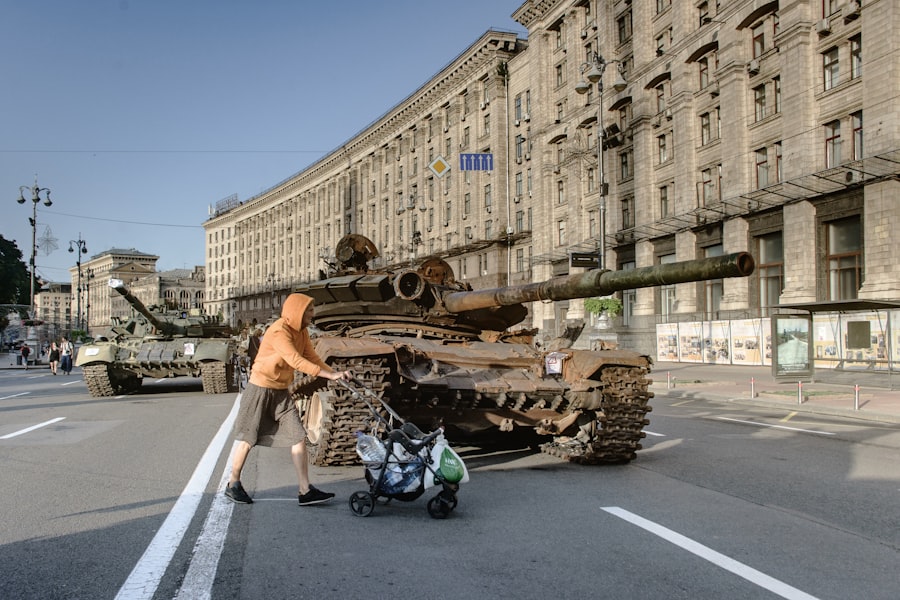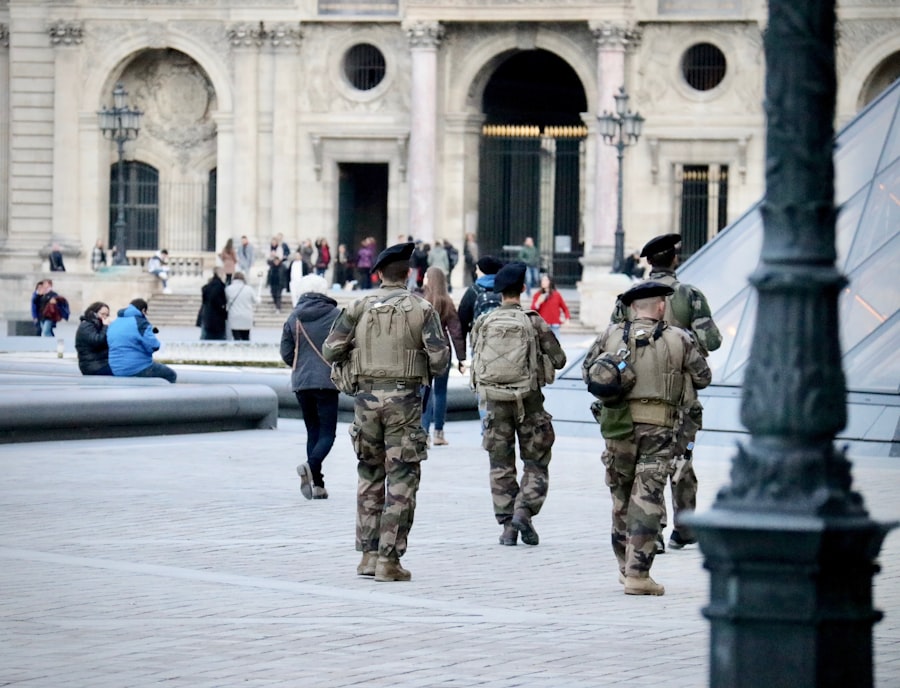In a world where the line between chaos and order often blurs, a chilling plot unfolded, revealing the dark underbelly of human ambition and malice. This narrative centers around a group of individuals who, driven by a shared ideology, conspired to execute a series of coordinated attacks that would send shockwaves through society.
As the story progresses, it becomes evident that the motivations behind their actions were as complex as the individuals themselves, intertwining personal grievances with broader socio-political issues. The plot thickened as the group meticulously planned their actions, demonstrating a level of organization that belied their chaotic intentions. Each member played a crucial role, contributing to a tapestry of conspiracy that would ultimately lead to a confrontation with law enforcement.
The stakes were high, and the consequences of failure loomed large over their heads. As the narrative unfolds, it becomes clear that this was not just a simple act of rebellion; it was a calculated attempt to challenge the status quo, albeit through violent means.
Key Takeaways
Background of the individuals involved
The individuals involved in this nefarious plot came from diverse backgrounds, each bringing their own unique experiences and motivations to the table. Among them was a former military operative who had become disillusioned with the government he once served. His expertise in tactics and strategy made him a natural leader within the group, and his personal vendetta against perceived injustices fueled his desire for revenge.
Alongside him was a young activist, passionate about social change but increasingly frustrated by the slow pace of reform. Her idealism had morphed into radicalism, leading her to believe that only through extreme measures could real change be achieved. Another key player was an individual with a history of criminal activity, whose connections in the underground world provided the group with access to resources that would otherwise be unattainable.
This person had long been on the fringes of society, harboring resentment towards authority figures and institutions. Together, these individuals formed a volatile mix of ambition, anger, and desperation, each driven by their own demons yet united by a common goal. Their backgrounds painted a picture of how personal experiences can shape one’s worldview and lead to drastic actions.
Planning and coordination of the attacks

The planning phase of their operation was marked by intense discussions and strategic meetings held in secret locations. The group utilized encrypted communication channels to avoid detection, demonstrating a level of sophistication that belied their initial appearance as mere radicals. They meticulously outlined their objectives, discussing potential outcomes and contingencies in case things went awry.
Each member was assigned specific tasks based on their skills and expertise, ensuring that every aspect of the plan was covered. As the days turned into weeks, the group’s confidence grew. They conducted reconnaissance missions to gather intelligence on their chosen targets, analyzing security measures and identifying vulnerabilities.
This phase of planning was crucial; it allowed them to refine their approach and anticipate potential obstacles. The more they delved into the logistics of their operation, the more they became entrenched in their ideology, convinced that their actions were justified and necessary for the greater good.
Selection of target locations
| Location | Population | Accessibility | Demographics |
|---|---|---|---|
| New York City | 8,336,817 | High | Diverse |
| Los Angeles | 3,979,576 | High | Diverse |
| Chicago | 2,693,976 | High | Diverse |
Choosing target locations was a pivotal moment in their planning process. The group debated various options, weighing the symbolic significance of each site against its potential for maximum impact. They considered government buildings, public spaces, and even events that drew large crowds.
Each location was scrutinized for its ability to convey their message while also ensuring maximum visibility for their actions. Ultimately, they settled on targets that represented what they perceived as systemic oppression and injustice. These locations were not chosen lightly; they were sites that held deep meaning for the group and would resonate with their intended audience.
The decision-making process revealed not only their strategic thinking but also their emotional investment in the cause. Each target was imbued with significance, transforming their violent intentions into a misguided form of activism.
Acquisition of weapons and materials
With targets selected, the next step involved acquiring weapons and materials necessary for their operation. This phase required careful planning and discretion, as they needed to avoid drawing attention from law enforcement agencies. The individual with criminal connections played a crucial role in this aspect, leveraging his network to procure firearms and explosives without raising suspicion.
The group also sought out materials that could be used for creating makeshift weapons or enhancing their existing arsenal. They scoured online forums and dark web marketplaces, utilizing pseudonyms and encrypted transactions to maintain anonymity. This process not only showcased their determination but also highlighted the lengths to which they were willing to go to achieve their goals.
As they gathered these materials, a sense of urgency permeated their meetings; time was running out, and they felt an increasing pressure to act before they were discovered.
Recruitment of additional participants

As the plan solidified, the group recognized the need for additional participants who could bolster their numbers and enhance their operational capabilities. They reached out to like-minded individuals within their circles, seeking those who shared their ideology and were willing to take part in what they viewed as a righteous cause.
The allure of being part of something larger than oneself proved irresistible for some recruits. Many were drawn in by the promise of camaraderie and shared purpose, while others were motivated by personal grievances or a desire for recognition within radical circles. This influx of new members brought both energy and complexity to the group dynamics; while some were eager to contribute, others struggled with the moral implications of their impending actions.
Communication and coordination with outside groups
In addition to recruiting new members, the group sought to establish communication with outside organizations that aligned with their ideology. They believed that forming alliances with other radical factions could amplify their message and provide additional resources for their operation. This outreach involved careful vetting; they needed to ensure that any potential allies shared their goals and would not compromise their plans.
Through encrypted channels and clandestine meetings, they connected with various groups across the country that had similar grievances against authority figures. These interactions allowed them to exchange ideas and strategies while also fostering a sense of solidarity among disparate factions. However, this collaboration also introduced new risks; differing agendas could lead to conflicts or expose them to increased scrutiny from law enforcement agencies monitoring radical networks.
Law enforcement intervention and surveillance
As the group’s activities intensified, law enforcement agencies began to take notice. Increased surveillance efforts were initiated as authorities monitored online communications and infiltrated radical circles in an attempt to thwart potential threats before they materialized. The group’s use of encrypted messaging apps initially provided a layer of security; however, law enforcement’s technological advancements posed significant challenges.
Despite their efforts to remain under the radar, certain behaviors raised red flags for investigators. Unusual purchases of materials combined with suspicious travel patterns led authorities to suspect that something nefarious was brewing. As law enforcement closed in on them, tensions within the group began to rise; paranoia set in as members questioned each other’s loyalty and commitment to the cause.
Foiled attempts and close calls
As the date for their planned attacks approached, several close calls threatened to derail their operation entirely. On one occasion, an unexpected police presence at one of their reconnaissance sites forced them to abandon their plans at the last minute. The adrenaline rush of narrowly escaping capture heightened both fear and determination among group members; they felt invigorated by the close call but also acutely aware of the risks involved.
Another foiled attempt occurred when one member inadvertently revealed details about their plans during an online discussion with an untrusted contact. This slip-up prompted immediate damage control efforts within the group as they scrambled to assess potential fallout from this breach of security. These incidents served as stark reminders of the precarious nature of their undertaking; each misstep brought them closer to exposure while simultaneously fueling their resolve to see it through.
Public reaction and response
As news of potential threats began circulating in local communities, public reaction ranged from fear to outrage. Media outlets reported on the group’s activities, framing them as domestic terrorists intent on wreaking havoc in pursuit of misguided ideals. Public forums erupted with discussions about safety measures and calls for increased vigilance against radicalization.
Some community members expressed sympathy for certain grievances articulated by the group but condemned their violent methods outright. This dichotomy highlighted a broader societal struggle: how to address legitimate concerns without condoning extremism or violence as a means of resolution. As fear gripped neighborhoods affected by heightened security measures, many began questioning how such radical ideologies could take root in seemingly ordinary lives.
Aftermath and legal consequences
In the aftermath of law enforcement intervention, many members of the group faced serious legal consequences for their actions or intentions. Arrests were made following extensive investigations that uncovered evidence linking them directly to planned attacks. The legal ramifications varied; some faced charges related to conspiracy while others were implicated in more serious offenses involving weapons possession or attempted terrorism.
The fallout extended beyond individual arrests; it sparked national conversations about radicalization, mental health support systems, and community engagement strategies aimed at preventing similar situations from arising in the future. As families grappled with the reality of having loved ones involved in such extreme actions, society at large was left questioning how best to address underlying issues without resorting to violence or alienation. In conclusion, this narrative serves as a cautionary tale about how personal grievances can spiral into collective action with devastating consequences.
It underscores the importance of understanding motivations behind radicalization while also emphasizing society’s responsibility in addressing systemic issues that fuel such ideologies before they manifest into violence.
In recent discussions about national security, the article “The Plan to Stage Terror Attacks in America” has raised significant concerns about the potential threats facing the country. A related article that delves deeper into the intricacies of such security issues can be found on Hey Did You Know This. This piece provides a broader context and explores various strategies that have been proposed to counteract these threats. For more detailed insights, you can read the full article by visiting Hey Did You Know This.
FAQs
What is the plan to stage terror attacks in America?
The plan to stage terror attacks in America refers to any organized effort to carry out acts of violence or destruction in the United States with the intention of causing fear, harm, or disruption.
Who is behind the plan to stage terror attacks in America?
The individuals or groups behind the plan to stage terror attacks in America can vary, and may include domestic or international terrorist organizations, extremist individuals, or foreign governments.
What are the potential targets of the planned terror attacks in America?
Potential targets of planned terror attacks in America could include government buildings, public transportation systems, landmarks, religious institutions, and other high-profile locations with the potential to cause mass casualties or significant disruption.
What are the potential consequences of the plan to stage terror attacks in America?
The potential consequences of a successful terror attack in America could include loss of life, physical and psychological harm to individuals, economic disruption, and damage to infrastructure and public confidence.
What measures are being taken to prevent the plan to stage terror attacks in America?
Law enforcement agencies, intelligence services, and other government entities work together to prevent terror attacks in America through surveillance, intelligence gathering, counterterrorism operations, and public awareness campaigns. Additionally, security measures are implemented at potential target locations to deter and mitigate potential attacks.
